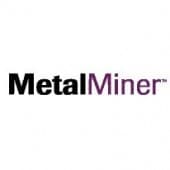There have been and will continue to be winners and losers in the metals industry from the lower gas prices that shale gas has created.
Even within industries, some will see opportunities where others do not. So it is for the steel industry-– and in particular, the split between EAF and integrated steel mills. Nucor Corporation leads the pack for EAF steel producers, having almost singlehandedly re-invented the EAF industry since the late 1960s, and becoming the largest U.S. steel producer and the country’s largest recycler in the process.
Therein lies the opportunity, not just for Nucor Steel, but for Steel Dynamics and others employing the mini-mill model.
According to the FT, several countries, including Iran, Saudi Arabia and Mexico, natural gas and iron ore are used to make a product called direct reduced iron (DRI), which is then added to scrap to make steel.
DRI, which avoids the need for coking coal, can be significantly cheaper than conventional steelmaking, depending on the price of gas. It is not a simple calculation, as DRI uses a little more electricity to melt a ton of finished steel. The economics appear firmly in favor of producing direct reduced iron at current and anticipated natural gas prices in the U.S., as Nucor’s recent investment validates.
The firm is close to completing a new DRI plant on the site of an earlier one in Louisiana, according to the FT. Ironically, the previous facility was dismantled in 2003 and shipped to Trinidad, because rising US gas prices made it uneconomic.
John Ferriola, the company’s chief executive, is quoted as saying the replacement will be “a game-changer to Nucor’s cost structure for high-quality iron.”
But Nucor’s not alone.
by Stuart Burns
- English (UK)
- English (India)
- English (Canada)
- English (Australia)
- English (South Africa)
- English (Philippines)
- English (Nigeria)
- Deutsch
- Español (España)
- Español (México)
- Français
- Italiano
- Nederlands
- Português (Portugal)
- Polski
- Português (Brasil)
- Русский
- Türkçe
- العربية
- Ελληνικά
- Svenska
- Suomi
- עברית
- 日本語
- 한국어
- 简体中文
- 繁體中文
- Bahasa Indonesia
- Bahasa Melayu
- ไทย
- Tiếng Việt
- हिंदी
Nucor Corp Leads Charge In Seizing Shale Gas Opportunities
Published 06/20/2013, 03:08 AM
Updated 07/09/2023, 06:31 AM
Nucor Corp Leads Charge In Seizing Shale Gas Opportunities
Latest comments
Loading next article…
Install Our App
Risk Disclosure: Trading in financial instruments and/or cryptocurrencies involves high risks including the risk of losing some, or all, of your investment amount, and may not be suitable for all investors. Prices of cryptocurrencies are extremely volatile and may be affected by external factors such as financial, regulatory or political events. Trading on margin increases the financial risks.
Before deciding to trade in financial instrument or cryptocurrencies you should be fully informed of the risks and costs associated with trading the financial markets, carefully consider your investment objectives, level of experience, and risk appetite, and seek professional advice where needed.
Fusion Media would like to remind you that the data contained in this website is not necessarily real-time nor accurate. The data and prices on the website are not necessarily provided by any market or exchange, but may be provided by market makers, and so prices may not be accurate and may differ from the actual price at any given market, meaning prices are indicative and not appropriate for trading purposes. Fusion Media and any provider of the data contained in this website will not accept liability for any loss or damage as a result of your trading, or your reliance on the information contained within this website.
It is prohibited to use, store, reproduce, display, modify, transmit or distribute the data contained in this website without the explicit prior written permission of Fusion Media and/or the data provider. All intellectual property rights are reserved by the providers and/or the exchange providing the data contained in this website.
Fusion Media may be compensated by the advertisers that appear on the website, based on your interaction with the advertisements or advertisers.
Before deciding to trade in financial instrument or cryptocurrencies you should be fully informed of the risks and costs associated with trading the financial markets, carefully consider your investment objectives, level of experience, and risk appetite, and seek professional advice where needed.
Fusion Media would like to remind you that the data contained in this website is not necessarily real-time nor accurate. The data and prices on the website are not necessarily provided by any market or exchange, but may be provided by market makers, and so prices may not be accurate and may differ from the actual price at any given market, meaning prices are indicative and not appropriate for trading purposes. Fusion Media and any provider of the data contained in this website will not accept liability for any loss or damage as a result of your trading, or your reliance on the information contained within this website.
It is prohibited to use, store, reproduce, display, modify, transmit or distribute the data contained in this website without the explicit prior written permission of Fusion Media and/or the data provider. All intellectual property rights are reserved by the providers and/or the exchange providing the data contained in this website.
Fusion Media may be compensated by the advertisers that appear on the website, based on your interaction with the advertisements or advertisers.
© 2007-2025 - Fusion Media Limited. All Rights Reserved.
